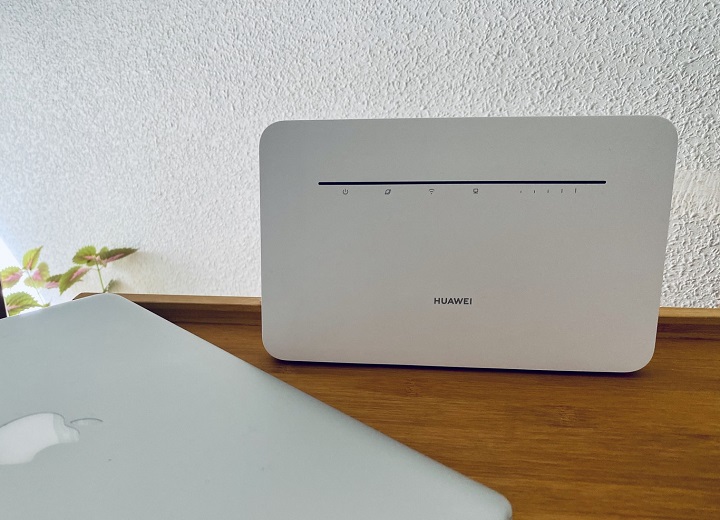
We have brought you a best Huawei 4G wireless router. Although the usual thing is that your operator “gives you” a router when hiring their services, it is not always the case, nor can it be the ideal model for our needs … and if the idea is to move from one place to another – like it can be a second residence – we add one more question to the equation: the need for it to be 4G so that, wherever you are, you have internet. We have tested the
Huawei 4G Router 3 Pro 4G wireless router and this is our experience.
Huawei 4G Router 3 Pro datasheet
CHARACTERISTICSHUAWEI 4G ROUTER 3 PRO
Ports1 Wan / Lan GE port, 3 Lan GE ports, one SIM (micro-SIM) card slot
Wifi802.11ac / a / n 2 x 2 and 802.11b / g / n 2 x 2. Dual band (2.4 GHz and 5 GHz)
4G bandsLTE: B1 / B3 / B7 / B8 / B20 / B28 / B32 / B38, UMTS: B1 / B8
4G speed300 Mbps / 100 Mbps (theoretical value. Actual speed depends on operator)
ProcessorBalong chip, Gigahome dual band Wi-Fi chip
Dimensions and weight219mm x 138mm x 25.6mm; 325 g.
Additional featuresSupport MU-MIMO technology, HUAWEI SmartHome APP, SMS service, firewall, PIN protection, MAC address filtering, Wi-Fi encryption authentication, VPN tunnel / VPN penetration test, IP, IPv6 and IPv6 / IPv4 dual stack , multi-APN, WeBUI, admin maintenance, HOTA
Huawei 4g router 3 pro price 99 euros
Huawei Datasheet
Design: with 4G, but not “portable”
The 4G router occur essentially in three formats: the compact sticks to plug into the computer – the device which are fed -; a little larger and with an integrated battery to use them on the go and, finally, the ones that most resemble a router “of a lifetime”, as is the case with the model at hand. This format has certain peculiarities.
Both due to dimensions and the need for a plug, we will not be able to use the Huawei 4G Router 3 Pro in mobility, but it is the most suitable for places such as a second residence, a flat for rent or simply a location without internet thanks to its features. Also, if we go to a space that has internet, we can use the WAN socket to use it as a normal router. But if we lack installation, pulling the 4G card is the solution.
After this little clarification, we proceed to delve into its design. The Huawei 4G Router 3 Pro wireless router is great, but not because of that it is difficult to move from one place to another. In fact, if you don’t have the stand to hold it upright, it’s pretty much the same as a paperback book of about two hundred pages . Its casing is made of resistant and functional white plastic that does not detract from aesthetics, reinforced by its minimalist lines.
On the front we find a line with LEDs to inform us of the signal strength, if it is on or off or the internet connection. At the base, the slot for a microSIM card and behind the reset button and the range of ports: it has four gigabit Ethernet ports – one LAN / WAN – to connect devices such as the computer or TV, the power socket and a port to connect the landline phone. Also on the back we find two 4G antenna extension ports (not included) hidden by a cover . Finally, at the top is the button to turn it on and off and the Hi / WPS, which allows you to quickly connect smart devices with the Huawei Smart Life platform.
A beginner-proof setup
The workhorse of a good part of Internet users is to configure the router . Thus, we simply want to register, for the technician to come home and perform the installation to leave it operational. And to cross our fingers so that it does not fail, at which time sooner rather than later it will be our turn to call for assistance.
The previous paragraph refers to the home Wi-Fi and the routers that the operators give us, but with a 4G router the starting point is different, since the idea is to take it from one place to another, which implies transporting it often and probably adding new devices. In this usage scenario, quick and easy setup is especially important.
In this sense, the Huawei 4G Router 3 Pro wireless router fully complies: it did not take more than to insert a micro-SIM card (3FF) and turn it on. Here it is important to keep in mind that we are going to need three passwords :
The first is the SIM card PIN , which comes on the large card that supports it, where we also find the useful and unmissable PUK. There is the option to disable the option of having to enter it each time we access to speed up the process.
The password to access the router options through the web http://192.168.8.1/ , which by default is “admin” (you will see it on the back of the device)
The default password to access the Wi-Fi network is also found on the back of the router, which will help you connect to the network with different computers simply by looking for the network name that begins with “HUAWEI …” (the SSID) and adding the password.
Once the three keys have been entered in the initial process, we will find ourselves in the main screen of the router menu. If everything has gone well, you will see the white lights for power on, Wi-Fi and the intensity of the signal, as well as a blue light that indicates that everything is fine.
An alternative to this procedure, which I have carried out from my computer, is to read the QR code on the back from the mobile or tablet , so that you can do the same configuration process from other devices.
The software version of the Huawei 4G Router 3 Pro wireless router is simple to use, it is simplified – in some cases there are advanced options that we can deploy if we want to go beyond the basics – and it is completely translated into Spanish. Thus, the data and steps to follow are quite clear and visual.
Essentially we are going to find a home screen that is the one you see on these lines, the network and Wi-Fi settings , where among other operations we can change the network search and the Wi-Fi / internet options, create limited networks for guests; In Devices we will visualize the connected devices with the possibility of removing them from the network; In Tools we have access to parental control and usage statistics and finally in Advanced we have security options such as firewalls , updates or VoIP.
Although there are some sections that require certain knowledge (the Advanced name is the most descriptive to avoid headaches), the strong point of this router is the simplicity of its management software , which allows you to do basic and fundamental tasks to manage our network, such as changing the Wi-Fi name and password that come due to defects, knowing who is connected or what we have consumed from our rate. And if we are more skilled with technology, it also has more complex options to configure to taste.
Performance: getting the most out of the signal
With the blunt size of a pocket book and a friendly and intuitive interface, the third pillar to evaluate in a 4G router is its performance . And it is that for trips and specific uses, there are many of us who settle for doing tethering from the mobile and save the ballot. I anticipate that by using the Huawei 4G Router 3 Pro wireless router instead I have gained in performance, signal stability and connected devices compared to my phone.
Although this Huawei 4G Router 3 Pro offers maximum theoretical values of 4G speed of 300/100 Mbps and is compatible with 5G , it is important to remember that if we pull a SIM card to have Wi-Fi without cables we will be hopelessly tied to the coverage, the gigs contracted and the speed provided by the operator. Furthermore, in our case we have not been able to make use of 5G connectivity and its advantages.
We wanted to check the difference in performance between the Huawei 4G Router 3 Pro router and do tethering with the mobile with an experiment, which although it has limitations, serves as an approximation: place both in the same place to minimize the effect of coverage and use the same SIM card to compare speed and latency data by running a speed test , specifically speedtest.nl .
The first on the forehead: when leaving my iPhone in the place of the router to run the test from the computer a little less than two meters away, the low signal intensity does not allow us to run it the first time, so we have to try again.
Huawei 4G Router 3 Pro
The Internet is one of those things that we almost take for granted in our lives that we don’t miss it until we lose it … such as when we go to a second home, a rural accommodation or simply a new office where we don’t there is connection.
Precisely because there are many of us who do not care too much about the router we use in order to have internet, when we have to go on a trip we appreciate more than ever a 4G solution like this Huawei 4G Router 3 Pro.
Its main strengths are its simplicity of use and configuration, which is not exempt from advanced options for other more technical user profiles, and the optimization that it is capable of doing with the data it takes from the card. In this sense, its management to deliver a stable network for various devices is very compelling .
This device is not the most compact on the market nor is it the cheapest – without going any further, Huawei itself has other more affordable models such as the Huawei E5576-320 or the Huawei E5576-320 , both aimed at mobile use -, but If we want a router that is not to be used on the go, but to move it from one place to another from time to time and there make intensive and demanding use, the Huawei 4G Router 3 Pro wireless router is a firm candidate that does not clash in terms of at a price compared to similar models from other manufacturers such as the D-Link DWR-921 or the TP-Link TL-MR6400 , both in its price range.

